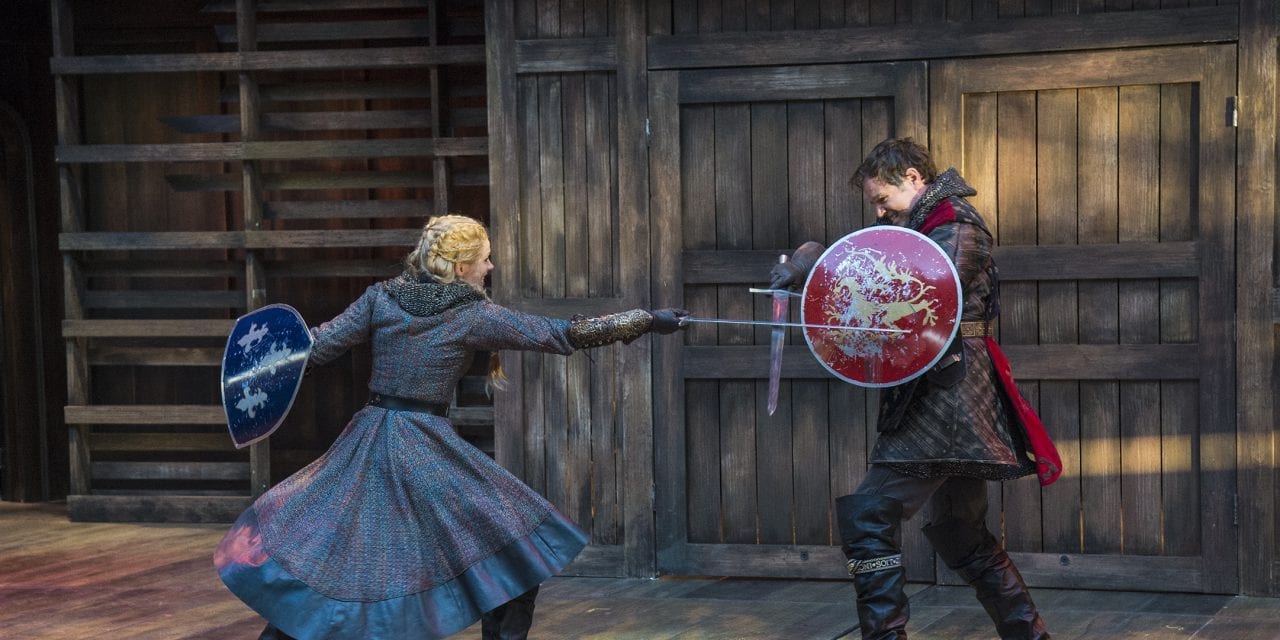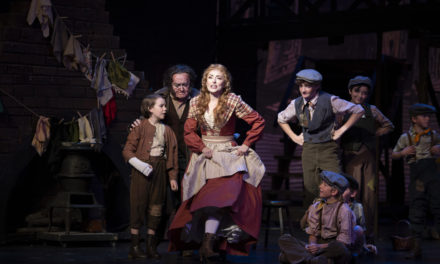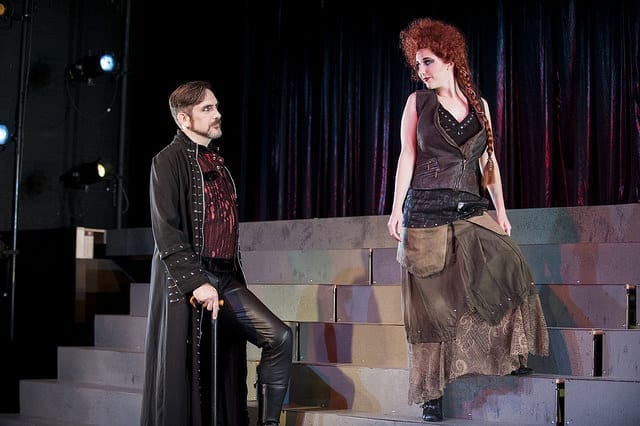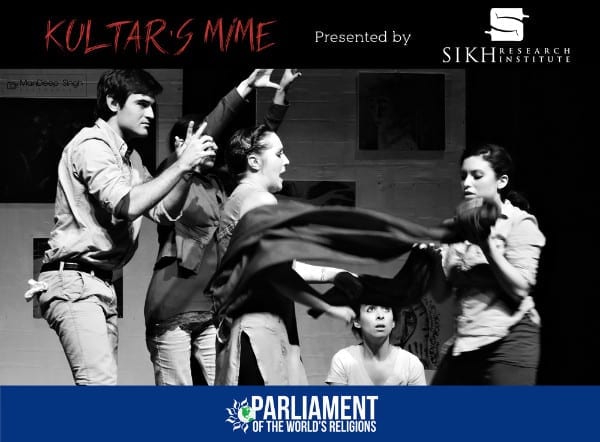CEDAR CITY — The Utah Shakespeare Festival is in the midst of an ambitious initiative to produce all of Shakespeare‘s plays, part of which is to produce all ten histories in the order of the historical events that they portray. After concluding the Henriad in 2016, the next phase of English history to put on the stage is a series of four plays that tell the reigns of Henry VI and Richard III. While Richard III is commonly produced, the three Henry VI plays are rarely on the Utah stage. But don’t let unfamiliarity be an excuse to avoid the Festival’s current production of Henry VI, Part One, which is surprisingly satisfying.

Show closes September 6, 2018.
Henry VI, Part One is the first chapter of a darker series of plays than the previous series of stories from British history. In this installment, the beloved Henry V has just died, and while his son Henry VI is still underaged, the new king’s uncle, the Duke of Gloucester (played by Dan Kremer) reigns as regent. Gloucester is opposed by another uncle, the Bishop of Winchester (played by A. Bryan Humphrey), and factions begin to develop among the British nobility. Meanwhile, the inhabitants of the French territory that Henry V conquered are rebelling; the French Dauphin, Charles VII, is finding military success with the help of Joan la Pucelle (often known as Joan of Arc). With bloodshed abroad and dissensions at home, it is a precarious time in English history.
Henry VI, Part One is one of Shakespeare’s earliest plays, and the script lacks the ingenious literary qualities, psychological realism, and quotability that are a hallmark of the Shakespeare style. Somehow, that did not prevent director Henry Woronicz from creating an entertaining production by showcasing the play’s action sequences and ensuring the play would have a visual appeal. Henry VI, Part One might contain more swordfights than any other Shakespeare play, and fight director Geoffrey Kent has choreographed these fights to be exhilarating scenes that bring an essential taste of danger to the play. Woronicz created beautiful stage pictures in many scenes, including Henry VI’s coronation scene and when Lord John Talbot consults with Henry VI about the war in France. With such interesting spectacles on stage, it was easy to forget that I was watching a “lesser” Shakespeare play.

Jim Poulos as King Henry VI. (Photo by Karl Hugh. Copyright Utah Shakespeare Festival 2018.)
Jim Poulos plays Henry VI as a weak leader unable to make decisions for himself. The meekness of the character comes to the forefront early when a fight breaks out in his court, and he had difficulty stopping it. Poulos was excellent at displaying the hesitation and uncertainty of Henry and showing why Shakespeare believed that weak kings were dangerous for the country. An especially nice scene showing Henry’s psychology happened when he met Lord Talbot, which made Henry star struck and in awe of the great warrior—exactly the opposite reaction that a king should have in that situation.
On the other hand, Talbot is the most real character in the play, and Kent (in addition to his fight directing duties) played Talbot masterfully. Kent’s portrayal of Talbot is heroic, and I loved the bravura and fearlessness he showed in battle. Kent’s sonorous, masculine voice and charisma made him a believable leader who could inspire men to charge into battle in defense of their country. In Act IV, though, Talbot showed a tender side, as he tried to protect his own son, also named John Talbot (and played by Austin Glen Jacobs) from the dangers of war. Kent and Jacobs also handled the awkward rhyming couplings in their scene together well. On the page these rhymes disrupt the ominous mood that the scene requires, but the two men’s line delivery reduced the awkwardness of the language and preserved the foreboding ambiance of the scene.

Geoffrey Kent as Lord John Talbot. (Photo by Karl Hugh. Copyright Utah Shakespeare Festival 2018.)
A pleasant surprise in this cast was Lisa Wolpe as the Duchess of Bedford, who is regent of France in Henry VI’s name. The original script has the character as a male duke, but Woronicz has re-imagined Bedford as a steely female warrior. Thus, the character served as a counterpart to France’s Joan la Pucelle, and I liked the balance that this introduced to the production. It helps that Wolpe gave Bedford a magnetic personality that meshed well with the leadership qualities of Lord Talbot.
On the French side, Ty Fanning was a natural leader, perfectly cast as Charles VII. His confidence and strength were polar opposites from Henry VI’s personality, and I found myself admiring Charles’s leadership qualities. Ever the English propagandist, Shakespeare’s message in Henry VI, Part One is that the English could have won the Hundred Years’ War if their king had been as strong as Charles VII, and Fanning displayed the characteristics of the ideal Shakespearean king.
But most memorable is Tracie Lane‘s portrayal of Joan la Pucelle. The headstrong personality and unbounded confidence that Joan displayed as she led men into battle or fought in hand-to-hand combat with English soldiers was fascinating to watch. The viciousness made Joan’s behavior in English captivity consistent with her personality. As she lashed out at her captors or lied about a pregnancy to prevent her death, I appreciated the character’s chilling, desperate pleas for her life. Audience members should be warned: Shakespeare’s Joan of Arc is not the saintly, martyred Joan that modern audiences imagine. For Shakespeare, the character is a shameless liar and a sorceress, though these traits are not well developed in the script.

Ty Fanning (left) as Charles, Tracie Lane as Joan la Pucelle, and Michael A. Harding as the Bastard of Orleans. (Photo by Karl Hugh. Copyright Utah Shakespeare Festival 2018.)
Costume designer Lauren T. Roark has created dazzling costumes that are alone worth the price of admission. My favorite costumes were designed for the French soldiers, especially for Charles VII, with his intricate robe, perfectly polished armor, and silver crown. Joan la Pucelle’s costume was a perfect blend of masculine and feminine, effectively showing how the character could balance her war duties with her feminine upbringing. Another visual asset of this production was Apollo Mark Weaver‘s set design; its tattered English banners and burnt out sections of upstage set decoration conveyed the pessimistic outlook Shakespeare had for this degenerate chapter of English history. Finally, I applaud Joe Payne‘s sound design and music, which featured percussion for many of the battle scenes, but also electric guitar at critical moments—an unorthodox choice that worked well with the adrenaline of the battle scenes.
Although there was much to like about Henry VI, Part One, there is still the fact that it is one of Shakespeare’s weaker scripts; the machinations of the English nobility and the face-off between the Duke of Gloucester and the Bishop of Winchester are much less interesting than the scenes from the Hundred Years’ War. Still Woronicz and his actors handle them well, and the conclusion of the play has an effective “hook” that makes me excited to see the continuation of the Henry VI saga. Although not as famous as some other Shakespeare history plays, this production of Henry VI, Part One is still enjoyable and deserves an eager audience.
Donate to Utah Theatre Bloggers Association today and help support theatre criticism in Utah. Our staff work hard to be an independent voice in our arts community. Currently, our goal is to pay our reviewers and editors. UTBA is a non-profit organization, and your donation is fully tax deductible.





